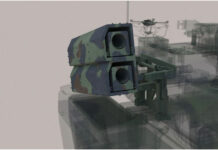Energy density is the most significant factor in secondary (rechargeable) battery consideration, but other important attributes are service life, load characteristics, maintenance requirements, self-discharge and operational costs.
–Nickel-cadmium – (NiCd) mature but has moderate energy density. Nickel-cadmium is used where long life, high discharge rate and extended temperature range is important. Main applications are two-way radios, biomedical equipment and power tools. Environmental considerations are also important in this category, as nickel-cadmium contains toxic metals that must be disposed of properly.
-Nickel-metal-hydride (NiMH)- has a higher energy density compared to nickel-cadmium at the expense of reduced cycle life. There are no toxic metals. Applications include mobile phones and laptop computers.
-Lithium-ion – (Li-ion) fastest growing battery system; offers high-energy density and low weight. Protection circuits are needed to limit voltage and current for safety reasons. Applications include notebook computers and cell phones. New nanotech processed electrode provide x5 more power and x10 longer cycle life at 20% of the weight.
-Lithium-ion-polymer – Similar to lithium-ion, this system enables slim geometry and simple packaging at the expense of higher cost per watt/hours. Main applications are cell phones.



















